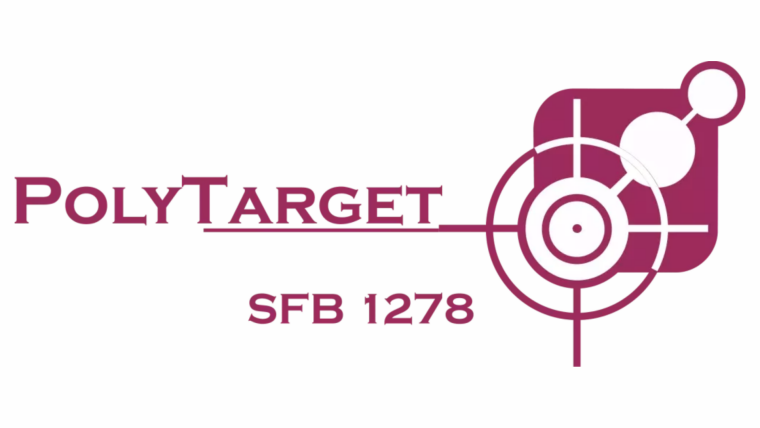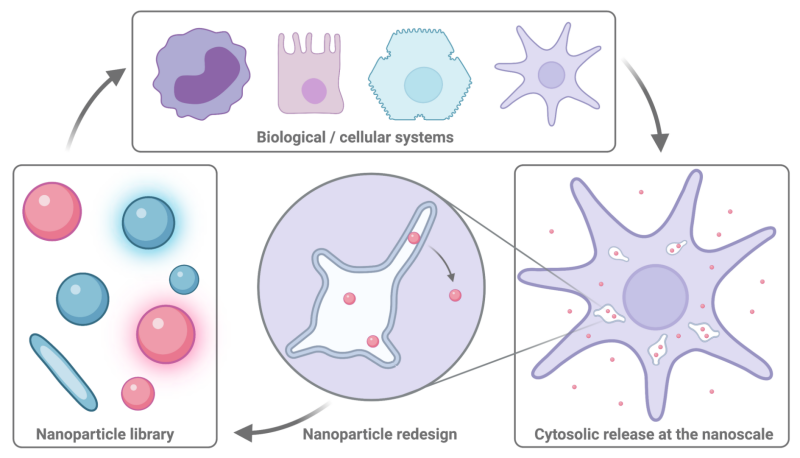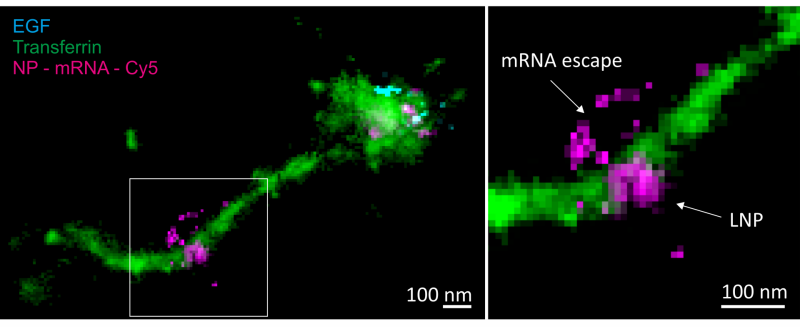
Structure-Function Relationship at the Nanoscale
Structure-Function relationship of NP efficacy at the nanoscale.
Picture: Christian FrankeWith quantitative super-resolution microscopy, we systematically investigate the nanometre-precise localisation of NPs and NP-cargo in context with early, early-recycling and degrading endosomal compartments and quantify the amount of released cytosolic NP and NP-cargo with single-molecule sensitivity, thereby unravelling whether certain NP parameters lead to a distinct sorting into endosomal recycling tubules, which we showed to be favourable for cytosolic cargo release in previous work. The existing NP libraries of the CRC 1278 give us the ideal basis to systematically screen the parameter space of varying NP material compositions, surface modifications, sizes, cargo-content and fluorescent labelling and visualise their precise sorting destination and quantify cytosolic release characteristics of the different NPs at the nanoscale in several CRC 1278 relevant cell lines and model systems to ultimately reveal a general cytosolic escape mechanism for NP-cargo via endosomal recycling tubules. We expect, that the quantitative and nanoscale assessment of endosomal NP location and cytosolic NP-cargo will lead to an effective molecular structure-function and structure-activity correlation map, guiding the future development of better NPs, targeted towards higher NP-cargo delivery efficacy and lower cytotoxicity through dosage minimisation, both in vitro and in vivo.
B07 - Quantitative single-molecule characterization of cytosolic nanoparticle cargo release by multi-colour, three-dimensional dSTORM
Multi-Colour dSTORM super resolution image of mRNA escape from endosomal recycling tubules.
Picture: Christian FrankeOne key aim in the second funding period of the CRC 1278 is the development of a predictive structure-function and structure-activity correlation model, that enables the targeted delivery of nanoparticles (NP) and their cargo with optimized efficacy and minimized dosages and, therefore, low cytotoxicity. To this end, the process of NP and NP-cargo delivery and thus leverage points for its optimization can be broken down into three distinct stages: The first step is the plasma membrane mediated NP uptake, which is already substance of intense study in numerous CRC 1278 projects. The second and third stages however, i.e. the dissociation of NPs and cargo within intracellular (endosomal) compartments and their subsequent cytosolic escape / release remain mysterious. Here, a key question is whether NPs can generally be tailored to be preferentially sorted to specific (endosomal) compartments that promote both the effective disintegration of NPs and the cytosolic release of NP-cargo.

